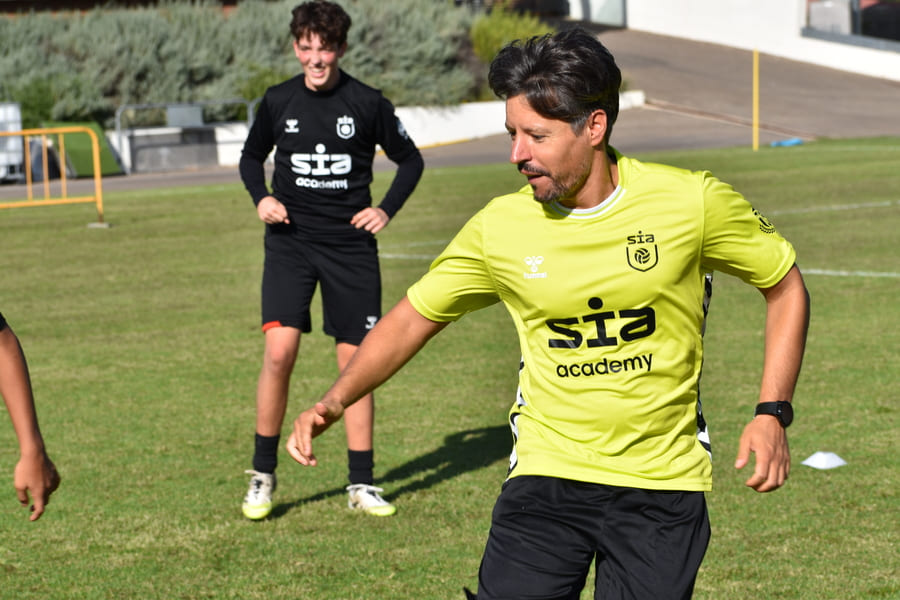In modern football, quick reaction can make the difference between an average player and one who truly stands out. The ability to respond in milliseconds to a stimulus —whether it’s an unexpected pass, a rebound, or a rival’s change of direction— is essential for achieving peak performance. At SIA Academy, we work intensively on this aspect because we know that reaction is the foundation of both cognitive and physical speed on the field.
As José Luis, one of our specialized coaches, explains, “reaction is the bridge between reading the game and technical execution. Without it, talent remains incomplete.” That’s why in our daily methodology we include exercises that develop reflexes, visual attention, anticipation, and decision-making. Below, we share the 7 reaction exercises we recommend for every young footballer who wants to take their development to the next level.
Table of contents
1. Visual reaction with colored cones
This exercise is ideal for working on visual reaction and processing speed. We place several cones of different colors around the player. At a verbal or visual signal from the coach, the player must touch the cone of the indicated color as quickly as possible. At SIA Academy we perform this both with and without the ball to increase difficulty and improve coordination.
José Luis emphasizes that “these types of exercises train the brain before the body. The player learns to react, decide, and execute in a single fluid motion.”

2. Reaction sprints with sound stimulus
This exercise focuses on auditory reaction. Players start from a static position and sprint at the sound of a stimulus —a whistle, a clap, or even a key word—. The key is not to anticipate but to react at exactly the right moment. This drill improves explosiveness and concentration, essential qualities for competing at the highest level.
At SIA Academy, we use this exercise especially in youth categories, where sustained attention is still developing.
3. Surprise ball game
The “surprise ball” is a favorite among young footballers. Several players stand in front of different balls, and the coach throws one unexpectedly. The goal is to react faster than the others and control or intercept the ball. This exercise develops not only physical reaction, but also anticipation and situational awareness.
In our academy, we combine it with real game scenarios where the ball might come from a rebound or a deflection. That way, the player trains both mind and body.
4. Cone circuit with unexpected changes
The classic agility circuit transforms when unexpected stimuli are introduced. At SIA Academy, we add verbal or visual cues to modify the path while the player is in motion. This way, players work not only on speed and coordination but also on their ability to react to changing contexts.
These drills reflect the reality of football: the game constantly changes, and only players with quick reaction can adapt without losing control of the ball.
5. 1 vs 1 duels with start signal
Nothing trains competitive reaction better than a real duel. In this exercise, two players stand back-to-back with the coach in between. The coach throws the ball in one direction, and at the signal, they turn and sprint to gain possession. This setup stimulates attention, response speed, and decision-making in split seconds.
At SIA Academy, we use this format in many variations: with obstacles, different types of balls, or even in tight spaces —all designed to make the player react under pressure.
6. Reaction in small spaces
Modern football is played in increasingly tight spaces. That’s why training reaction in scenarios with limited time and space is vital. In this exercise, we organize mini matches (3 vs 3 or 4 vs 4) where players must think and act quickly.
The goal is to improve cognitive reaction, meaning the speed at which the brain processes information and chooses the best possible option. As we like to say at SIA Academy, “mental speed comes before physical speed.”

7. Mirror exercise
In this drill, two players face each other. One performs body movements —lateral, diagonal, or jumps— and the other must react by mirroring each move in real time. It’s a fun dynamic that develops coordination, observation, and synchronization.
At SIA Academy, we use it both during warm-ups and in individual technique sessions because it enhances focus and strengthens the mind-body connection.
The importance of training this aspect of the game
Training reaction not only improves speed but also develops game intelligence. Each exercise we implement helps our players think faster, anticipate better, and act with precision. In the words of José Luis, “when a player masters their reaction ability, they become a footballer who stands out without needing to run faster than others.”
At SIA Academy, we firmly believe that reaction is the heart of modern performance. That’s why all our programs —from youth to elite levels— include specific routines to strengthen it. Our goal is for every young footballer not only to react to the game but to anticipate it, control it, and ultimately lead it.
Reaction is not just a physical quality; it’s an integral skill that involves the mind, body, and emotions. A footballer with great reaction can turn a single second into a goal opportunity or a decisive recovery. At SIA Academy, we know this well: training reaction means training for the future.
Because in football, whoever reacts first, controls the game.






